This visit to Japan is a total of seven days, the content is more, in view of the previous children's shoes reflect that my article is too long to read. So one of the first, industrialization content, followed by two, three and so on, please pay attention.
Industrialization investigation is the highlight of this time. We visited Seeper, Lixil, HOUSETEC and other companies respectively. Here we focus on Seeper and Lixil.
Waterlogged residence:
Seeper House is a famous construction company in Japan and one of the earliest pioneers engaged in housing industrialization in Japan. Sekisui has a residential park near Tokyo, the company's showroom, dedicated to single-family homes. Because land in Japan is privatized, each family builds single-family houses on its own homestead, so single-family houses are the largest type of housing in Japan. The day of the visit happened to be a Wednesday, which was the rest day of the company. Because Saturday and Sunday are the peak days for customers to visit, Japanese residential companies are resting on weekdays. As General Manager Cao of Keyi had contacted us in advance, he sent a young man to wait for us at the gate of the factory with a very respectful attitude. Residential Park on the edge of the factory, which arranged a variety of houses, about hundreds of buildings, and a domestic residential area about the same size, is indeed a "park.".
It can be imagined how much manpower and material resources are needed to maintain such a large exhibition venue, which fully illustrates the strength of the exhibition venue. No real estate company or construction company in China has ever had such a large-scale exhibition venue.

The young man in charge of reception first asked us what kind of apartment we were interested in, because there were too many apartments to visit all of them, only two or three of them. I said I wanted to see 200 to 300 square meters of apartments, with a total investment of about 100 million yen, which is equivalent to about 6 million yuan.
The first building covers an area of about 300 square meters and is a completely Western-style building from inside to outside. Judging from the growth of outdoor green plants, the building should be some years old.
The interior is a little dated but spotlessly clean.
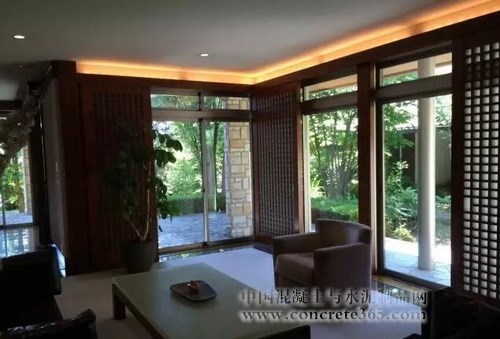
The second building I visited is a Japanese-style building, which should be newly built. It is very simple inside and outside. The building area is about 200 square meters, which is my favorite type. I asked the young man why most of the houses we usually see in Japan are European-style instead of Japanese-style? The young man answered that the Japanese house was more expensive than European one.
It seems that even in Japan, a country that attaches great importance to tradition, the cost of the house is still the preferred factor for users, and the architectural style is not the first factor, otherwise all Japan should be Japanese-style houses.
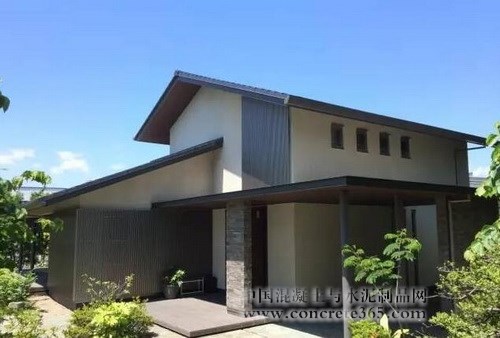
After visiting the two buildings, we visited the flooded laboratory.
The first is the shock absorber test, which demonstrates the displacement distance of the external wall panel through the artificial simulation of the earthquake, indicating that even under the action of the seismic force with an intensity of 7 degrees, the sealant of the external wall panel will not be broken, and the external wall panel will not be damaged.
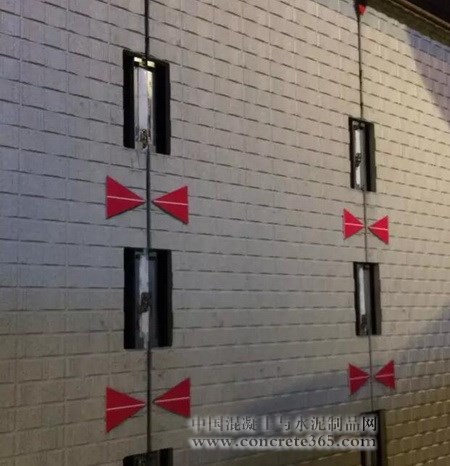
This is a demonstration of the floor structure of the house, showing the pipeline arrangement under the floor of the SI system.
There are also demonstrations of building sound insulation, heat preservation, self-cleaning paint, etc. The waterlogged residential park shows all the parts and products of the house from structure to electromechanical to interior decoration, which is a very complete product system. Customers here not only learn the knowledge of housing construction, but also intuitively feel what their houses will be like in the future.
[Page]
Liju LIXIL:
Lixil is Japan's largest building materials company, its product line is very long, from the production of basic building materials, to the provision of finished housing, everything, it even has its own bank! In Japan, because of the privatization of land, small houses are the mainstream of real estate, so there is no real estate company in our country in the usual sense. Most people build houses on their homesteads, so companies like Lixil are a bit like domestic construction companies, but to be exact, they should be called contractors. Unlike domestic construction companies, Japanese contractors have a very long product line, covering almost all products related to housing. Of course, this kind of contractor does not produce everything by himself, but it must be integrated by himself, of course, the premise is to set standards by himself.
Li has an exhibition hall in Tokyo, located in an office building in the city's most prosperous Shinjuku district, occupying two floors, each with an area of about 1000 square meters.
The upper floor is the reception hall. It happened to be Sunday, and they all came to visit one by one. The receptionist guided the customers to the table first. Each receptionist holds a form in his hand and fills it out while asking customers, mainly about area requirements and capital budget.
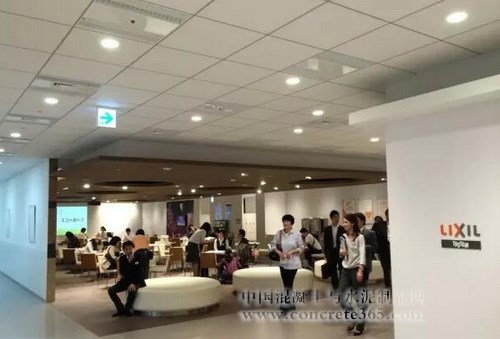
On the edge of the reception hall is a display of various types of apartments. From the living room to the bedroom, from the dining room to the bathroom, you can see all kinds of different layouts very intuitively.
Huxing will be selected to the following floor to choose materials and products, of course, accompanied by the reception staff. Choose the shower first. The one on the left is the receptionist, who is carefully recording on the form.
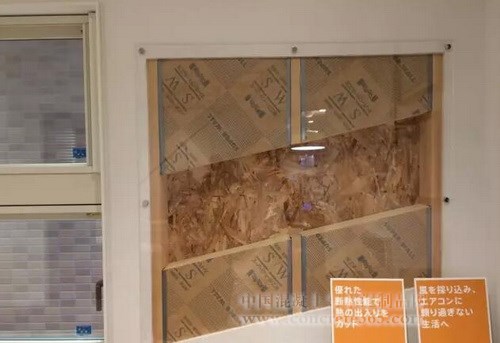
There is also a display of the wall structure, with tips beside it, and its performance characteristics are clear at a glance.
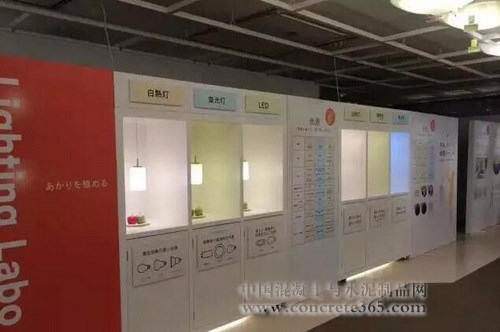
This tells you that the same material has different effects under different color temperatures. This is also a design element seriously neglected by domestic interior designers, so it is often uncomfortable to get the materials selected at the exhibition venue at home.
Summing up the exhibition halls of Seeper and Lizhu, although each has its own characteristics, the common advantage is that customers can complete all the items of housing construction in one day, ranging from structural systems to towel poles and faucets. The most important thing is that all items are clearly marked! Therefore, at the end of the day, the capital budget is also clear. Buying a house in such a place is not only efficient, but also a kind of enjoyment!
[Page]
At present, there is basically no such format in China, because the domestic decoration is basically after buying a blank house. Ask everybody to be able to recall oneself decorate a process, have wood to have a kind of rush foot that picks a layer of skin? Senior people like me, although I have done numerous home decoration, now I think of it or a head of two big!
Below I take the domestic home decoration industry to make a horizontal comparison to see what the gap between Japan and China is:
The first is the standard of product delivery: domestic decoration, whether you have agreed in advance is 1000 yuan or 2000 yuan per square meter, your psychology is very perturbed, because the final effect is not spectrum. You can only qualitatively say "mid-range decoration" or "high-grade decoration", but how to quantify mid-range and high-grade? The subsequent decoration process is a kind of mental suffering, and in the end, it can hardly achieve the effect you imagine. There is a problem that the construction team is not good enough, and there is also a problem that your own positioning is not accurate. But Li lives the exhibition hall to solve this problem very well, clearly marks the price, does not need to talk nonsense, after also does not need to look for the account. Generally speaking, a house of 300 square meters, including structure and fine decoration, costs between 10000 and 20000 yuan per square meter, which is reasonable relative to the overall income of Japan. Even compared with the domestic cost, it is not expensive.
The second is the completion of the product: You can not fix all the problems of Jiezhuang in any domestic decoration company. Besides talking with the decoration company, you should also turn to the furniture market, the lamp market, the cloth market and so on, which can make you dizzy. This shows that the completion of products in the domestic decoration market is very low, while Japan is a real one-stop service. Exhibition halls like Lixil can completely attract customers, and they can't leave.
The 3rd it is to use a function: The stylist of home comes up to use all sorts of to decorate a style first, what Mediterranean, hind is contemporary wait to flicker you dizzy, next your attention is centered entirely to decorate a style to go up, as to how good use did not come out. This has something to do with the current social atmosphere in Taiwan. People only pay attention to the surface, not the inside. In addition, domestic designers are generally younger, lack of life experience, do not do enough homework, and do not seriously study the use of functions. The Japanese showroom is very clear about the function of the product, with a high degree of standardization, and the product you choose is in line with your functional needs.
The fourth is assembly: at present, the interior decoration in China is still at the level of "a handful of mud", relying on the manual technical ability of the construction team and the experience and responsibility of the workers on site to ensure the quality. And be in Japan, only the metope wallpaper of the bedroom depends on handwork even, the working procedure of the rest has been assembly entirely. Therefore, Japan's conventional home decoration requires less personal technical ability of workers than domestic ones, so its product quality is easy to guarantee. Many years ago, when I visited the factory of TOYOTA HOME, I learned that all their wires were connected in a way similar to our weak current, without any tools or drawings. Because the color of each line is different, the same color can be inserted directly. Even color blindness doesn't matter, because different color lines can't be inserted at all. So the electrician business was cancelled. The benefits of assembly are not only good product quality, but also high efficiency, and more importantly, a significant reduction in labor costs.
The fifth is noise: I bought the house in 2001, and recently my neighbors have started the second round of renovation. I have to endure the noise of electric saws and drills every day. Even new houses, generally speaking, will not be quiet within three years after delivery, and a new round of decoration will begin after ten years. In Japan, whether it is new house decoration or replacement decoration will not affect the neighbors, because the size is standardized, do not need to cut, so there is no harsh noise.
The sixth is the delivery period: domestic Jiezhuang, or all the projects do not delay the construction period, the reason is mainly manual operation, too many uncontrollable factors, so the construction period is also uncontrollable. Because of the high degree of assembly, Japanese decoration can accurately arrange the process, and the construction period can be controlled. At the same time, the cost can be controlled.
The seventh is the technical system: the domestic technical system is from bottom to top, the technical content of a single part or product may be very high, but the combination is not enough; the technical level of a single worker may be very high, but there is no overall construction method system, and the technical standard, construction period and quality of the product are completely in the hands of the foreman. Japan's technology system is top-down, which is established at the height of the industry. In the exhibition hall of Seeper and Lixil, we can see that their products are not only produced by the company itself, but also integrated by the whole world. This kind of technical system can get rid of the restriction of individual and single product to the industry, and make the whole industry develop to a higher level continuously.
The last and most critical point is the investment of Japanese companies in R & D. The scientific research funds of enterprises like Sekisui and Lixil can account for 2% of the annual turnover. After decades of continuous investment, we can have the rich product system we see today and form an exhibition venue of this scale. On the contrary, the scientific research of both the government and enterprises in China is a way of "sprinkling sesame salt", which stays at the superficial level of pursuing short-term benefits, and even the rudiment of the basic system has not been formed so far.
In short, the gap between China and Japan is huge, and if we want to narrow this gap, we must start with the establishment of a systematic thinking of industrialization. At least we can learn from the construction of the exhibition hall. I believe that this model of the exhibition hall must have a strong demonstration effect in China. At present, the technical level of many individual parts and products in China has actually reached the international first-class level. Enterprises like Suzhou Keyi have begun to sell their products back to Japan. As long as we establish a technology system suitable for our national conditions and continue to integrate enterprises and products, we will gradually narrow the gap.
From Japan's experience, the form of the whole industry chain group is the only way for housing industrialization, and China is bound to follow this path.



 浙公网安备33010802003254号
浙公网安备33010802003254号